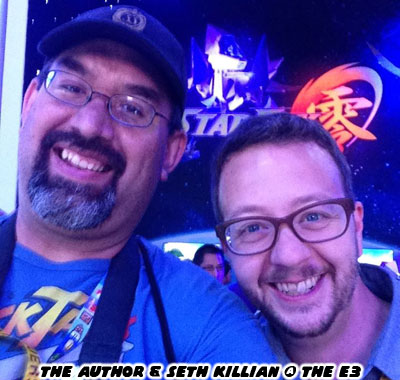
Before I talk about the game I should mention that the founders of Radiant Ent. are Tony and Tom Cannon. The brothers are computer science grads and have worked at VMware as well as Microsoft. But unlike their peers the duo are well known in the fighting game community. Tom founded the EVO fighting game championship and Tony engineered the GGPO technology which helps keeps the lag to the barest of minimums and allows fighting games to run smoothly online. They brought Seth Killian, a pro gamer-turned community manager-turned fighting game advisor on board to make sure that Rising Thunder has all of the elements that makes a great fighting title. What's not fair is for me to review a game that is still in Beta. For a title this early in development it has a tremendous amount of polish and will easily be one of the best fighting games of the new generation. Instead of focusing on the game, lets talk a little bit about the road that brought us here.
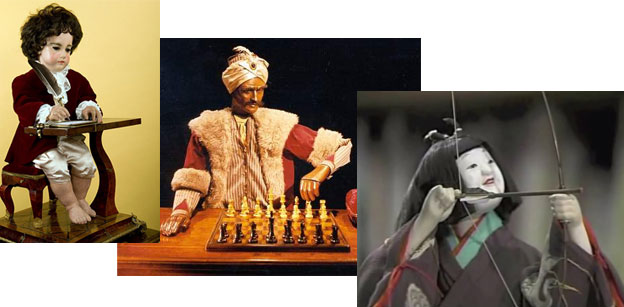
Robots and clockwork automatons (known as Karakuri Ningyo in Japan) had been a part of popular culture for centuries, if not millennia. Many of the earliest robots were created well before the age of silicon and microprocessors. These machines were created often by clockmakers as a way of showing off their mechanical engineering skills. Some robots were as small as a doll while others were full human sized. Some could play musical instruments, others could write messages, shoot arrows and even beat humans at chess. They inspired countless legends and had a hand in shaping pop culture when they debuted. Of course no sooner was an artificial person created than people began to wonder if it could beat a human in combat. Well before automations there were ancient Jewish folklores that spoke of golems made of clay that were brought to life by spirits. These legends predated Mary Shelly's Frankenstein story. It was a cautionary tale at the root; could man create life from nothing and if he did so would he abandon it or guide it? Since man was not an all-seeing-all-knowing god the stories often ended with man abandoning the creation and letting it run amok, an unstoppable symbol of his ego. These creatures would show up in pop culture in movies, comics and of course even video games.
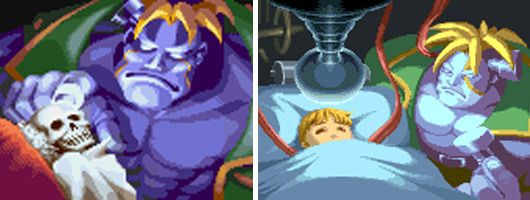
The first modern concept of a brawling robot was explored in the 1933 Disney cartoon Mickey's Mechanical Man. In the film the champion fighter was a powerful ape. Disney didn't even consider the notion of man versus beast but instead jumped at the chance to present beast versus machine. Mickey Mouse built a robot that would take on the champ and settle the question of who would win in a fight. What made the cartoon unique was how robots were imagined as fighters. Since they were not human, the did not have the limitations of muscles, internal organs or ligaments. They could turn 360 degrees at the waist, spin their arms like propellers and even throw spring-activated trick punches. These things were great visual gags but stuck with audiences. Many of the gags would be copied by cartoonists and animators around the world for the next 80 years.
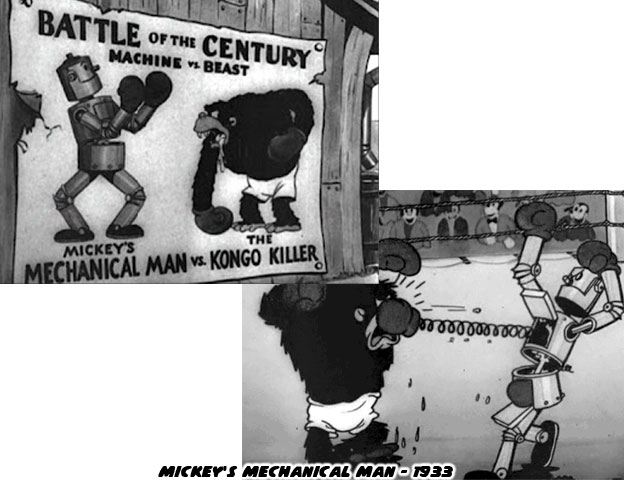
Robots were unique in how they could take punishment and deliver it without every feeling pain or empathy. It was a scary concept when applied to Dr. Frankenstein's biological monster. Yet something profound happened in 1953. An artist by the name of Osamu Tezuka created a manga series about a robot boy named the Mighty Atom. This little robot boy was not unlike a super powered Pinocchio. He was brave and naive at the same time. He had a great sense of justice but was also curious about the world he was born into. Tezuka was inspired to become a cartoonist at a young age. He saw the animated feature Bambi as a boy. Although he did not understand English he learned the story through the large expressive eyes of the characters. Because of this Tezuka created characters with large eyes and set a standard that would be copied by countless generations of manga artists. Many of the works that Tezuka created were morality plays.
The Mighty Atom, localized as Astro Boy in the USA, was no different. Astro was born into a world where robots were becoming sentient and they were not happy as slaves to their human creators. Some thought to rebel and this alarmed the humans. Dr. Umataru Tenma created Astro as a surrogate for his deceased son. Yet he abandoned Astro when he realized the machine could never replace his only child. Professor Ochanomizu, a scientific rival to Tenma, adopted Astro and decided to raise him to help humanity. Astro was granted amazing powers and weapons which easily rivaled the coolest heroes from the west.
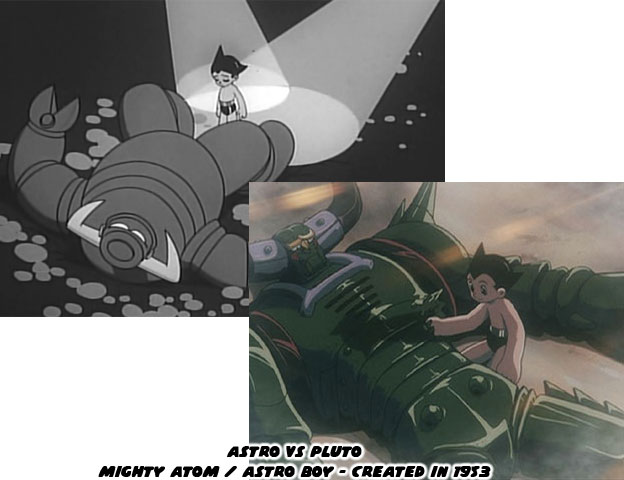
Astro Boy was a revolutionary title because audiences learned that people could be as heartless as the machines they created. In a way the robots they created represented the greatness that we should hope to achieve. We learned to feel sorry for many of the robots that Astro had to fight. They were often misguided in their conflicts. Tezuka did an amazing job at creating sympathetic beings. These characters would color the industry itself. A generation that was raised on a steady diet of anime would create the first video games, many times they reflected the animation and comics that they had grown up on. The first video game heroes were also influenced by the animation pioneers. Mega Man and his creator Dr. Light were nothing more than a retelling of Astro and Dr. Umataru.
Few titles based on robots ever matched the greatness of the Mighty Atom. That did not stop other writers and artists from trying to create lasting characters. One of the best went by the name of Mitsuteru Yokoyama. In 1956 Mitsuteru created Tetsujin 28-go, a manga about a giant robot and his young master Shotaro Kaneda. Tetsujin literally translated to iron man. Just an FYI, Marvel's Iron Man did not debut until 1963 in an issue of Tales of Suspense. Tetsujin 28 was a remote control robot that fought crime and other giant robots. The character gained symbolism as a sort of big brother and protector for Shotaro. It was possibly the first time a mechanical surrogate was presented in such a light. The series was rebooted several times in manga and anime form. There was a certain charm to the barrel-shape of the character and he retained his look in most every reboot. If you look at the Rising Thunder lineup I'm sure you'll be able to spot the influence that Tetsujin 28 had on the design team.
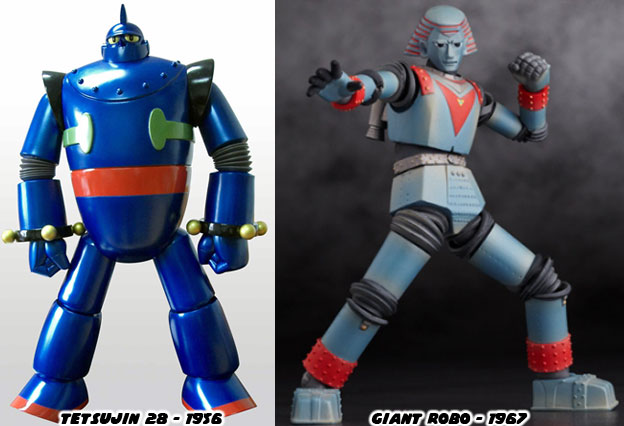
Mr. Yokoyama's biggest hit was yet to come. In 1967 he created a new series, this time meant for television, which was a new take on the Tetsujin mythos. The new robot and series was named Giant Robo. This pharaoh-headed robot obeyed the commands of his young master Daisaku Kusama. Unlike Tetsujin the robot showed signs of free will and could choose to ignore his master. This character was not only seen a a surrogate family member, he literally stood in for Daisaku's father, the creator of Robo. The live-action Giant Robo series was a staple in many households, not only in Japan but also in the west where it was translated for young Generation-X fans to enjoy. The series had great action, an incredible assortment of heroes and villains and easily one of the most melancholy endings for a children's show ever written. In the eyes of many it would not be matched until the original animated series Giant Robo debuted almost 20 years later. The redesigned Giant Robo was heavily armored, much larger than his live-action counterpart and armed with missies, cannons and more explosives than a battleship.
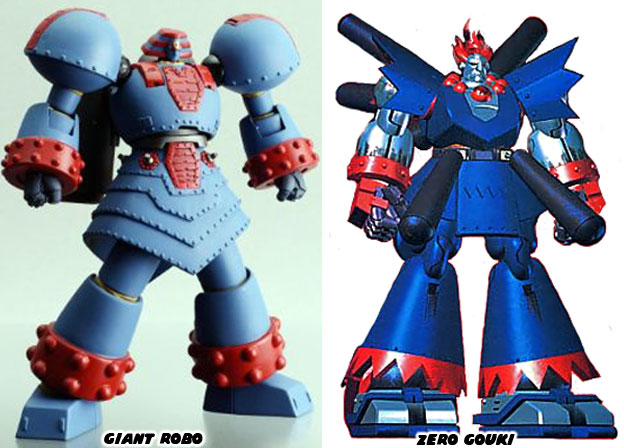
The heavyweight redo of Robo did not go unnoticed by the game community. In the 1995 Capcom game Cyberbots: Full Metal Madness, there was a hidden character modeled after Giant Robo. The game was set in the far off future. Where giant piloted robots fought in the place of armies. Of course since this was a Capcom fighting game the studio wanted to put their own spin on the character. Gouki from Street Fighter would be lending his likeness to the new robot. Fans of the genre as well as Giant Robo saw this as one of the greatest homages yet designed. Robots were perfect for gaming. They could change shape, carry far more weapons than any human and of course take tremendous amounts of damage. Finding ways to adapt the abilities of small robots like Astro Boy or giant robots like Tetsujin 28 into fun gameplay elements would take a long time to figure out. But that was okay because many of the best game developers were small children when the shows came out. They had plenty of time to think about how to make a game out of the battling robot.
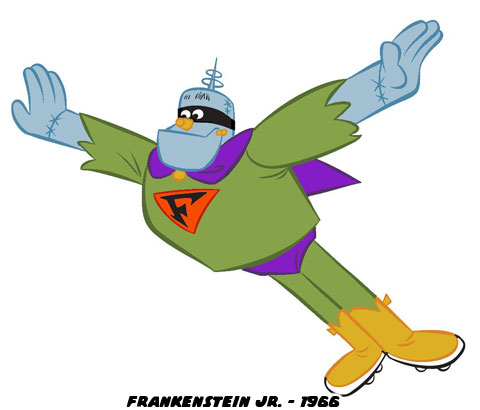
Thanks to the work of Mr. Tezuka and Mr. Yokoyama writers and artists around the world were learning that a robot could be the star of a series. Depending on how they were presented a robot could be menacing or sympathetic. This was not an idea that was exclusive to Japan however. In 1966, as an answer to the runaway craze that Tetsujin 28 had started for Japanese animation, the US studio of Hanna Barbera created a cartoon called Frankenstein Jr. In it Professor Conrad created a giant robot for his son Buzz to command using a ring, instead of a watch. Frankenstein Jr. fought all manner of giant monster and robot on his adventures. Hanna Barbera was good at responding to changes in pop culture. They created Space Ghost and Johnny Quest as the first animated answers to the comic book craze of the '50s and '60s. Robots were apparently becoming a thing and Hanna Barbera wanted to ride that trend as well. The trend was inescapable for novelists as well. The Iron Giant by Ted Hughes was published in 1968, after the debut of Giant Robo and Frankenstein Jr. A few decades later would be the basis for the fan-favorite animated film sharing the same title. The robot genre was only beginning to gain momentum. In the next blog we will explore the titles that shaped the evolution of the genre in animated and even game form. I hope to see you back for that! As always if you enjoyed this blog and would like to sponsor me please visit my Patreon page and consider donating each month, even as little as $1 would help make better blogs and even podcasts!

No comments:
Post a Comment